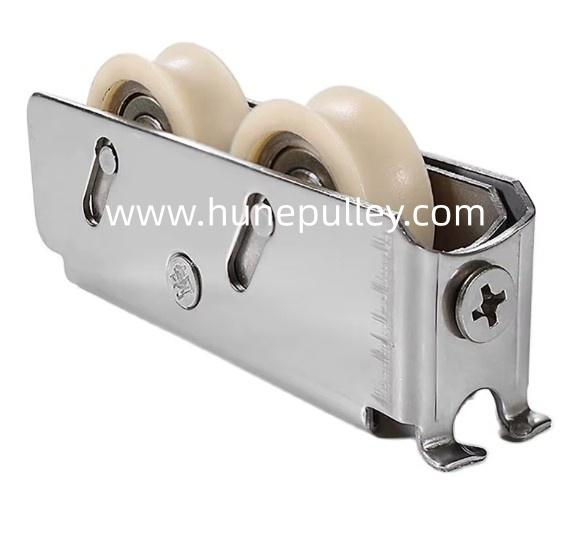How HUNE Sliding Window Rollers Solve Noisy Window Movement Issues

If you have ever struggled with a cabinet or window that does not slide smoothly, Sliding Window Rollers could be the part behind the issue. These small yet essential components help doors and windows glide effortlessly along tracks, providing both convenience and safety. When they function correctly, you might not even notice their presence. However, when rollers stick or create noise, they can disrupt daily routines and reduce the efficiency of furniture and architectural elements. Understanding common causes and remedies can save time, prevent damage, and enhance the overall experience of your home or office spaces.
One of the most frequent problems comes from debris accumulation. Dust, hair, or small particles often find their way into tracks, creating friction that slows down the rollers. Regular inspection and gentle cleaning can prevent most movement issues. Using a soft brush or compressed air helps remove buildup without damaging the rollers themselves. Avoid harsh chemicals that may corrode the materials or reduce the lifespan of the moving parts.
Another cause of malfunction is misalignment. Tracks may warp slightly over time due to temperature changes or building movement, which can lead to uneven wear on rollers. Checking the alignment and adjusting the roller positioning ensures that doors or windows move smoothly. Small adjustments can significantly improve motion and reduce noise without needing to replace components entirely.
Lubrication is a practical solution for reducing squeaks or sticky motion. Applying a small amount of silicone-based lubricant along the track and roller surfaces can restore smooth movement. It is important to avoid heavy oils that attract dust and debris, which might worsen the problem over time. Proper lubrication maintains both performance and cleanliness, ensuring that Sliding Window Rollers continue to operate reliably.
Wear and tear is another factor that can lead to noisy or stuck rollers. Even high-quality components will experience gradual degradation, especially under frequent use. Inspecting rollers for cracks, chips, or uneven surfaces helps identify which parts need replacement. Many homeowners or office managers find that addressing small issues early prevents costly repairs or replacements later.
Some issues also arise from improper installation. Rollers must fit precisely within the track, and even a minor deviation can cause misalignment and noise. Consulting installation guidelines or working with experienced professionals ensures that components are positioned correctly from the beginning. This proactive approach minimizes frustration and prolongs the life of your windows or cabinets.
Huaneng produces durable Sliding Window Rollers designed to withstand frequent use while maintaining quiet and smooth operation. Their products emphasize reliability and adaptability, allowing doors and windows to move freely without frequent maintenance. By integrating quality components and following basic troubleshooting steps, you can significantly reduce operational issues and enjoy a better user experience.
Taking preventive measures not only enhances functionality but also contributes to safety. Stuck or noisy sliding mechanisms can strain users, especially children or elderly individuals. Smooth, silent operation allows for effortless control and reduces the risk of accidents or damage to surrounding furniture.
For anyone looking to improve the performance of their windows or cabinets, focusing on these core factors—cleanliness, alignment, lubrication, and high-quality parts—makes a noticeable difference. Investing in well-engineered Sliding Window Rollers ensures longer service life, reduced maintenance, and a more enjoyable interaction with your living or working environment. To explore Huaneng’s range of products and find suitable options for your sliding systems, please visit https://www.hunepulley.com/product/door-roller-hardware/aluminum-door-window-rollers-iron-slide-bearing-windows-roller-hardware.html


